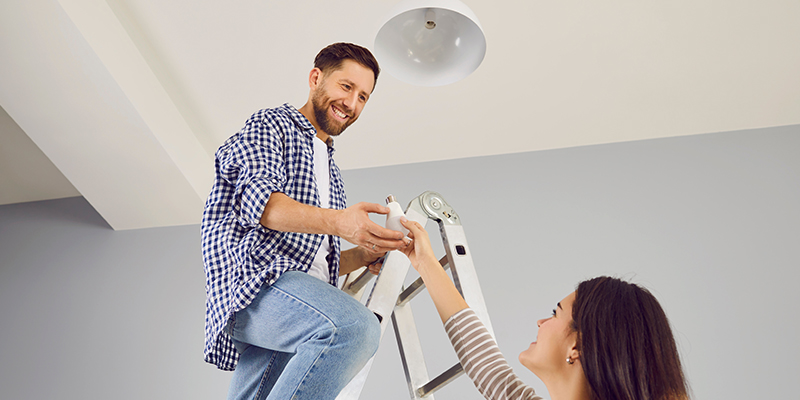7 Ways to Make Your Garage More Energy-Efficient
Posted On: November 28, 2023

As a homeowner, you already know that keeping your house at a consistent temperature is a good way to save money on electricity. If you have an attached garage, however, it may make maintaining a set temperature far more difficult.
When it comes to improving the energy efficiency of your home, it's easy to overlook your garage. Depending on the season, it can leach air from the rest of your home, which could overwork your heater or air conditioner. However, it only takes a few simple steps to ensure your garage isn’t affecting your home’s overall temperature.
Here are seven ways you can make your garage more energy-efficient:
-
Add drywall and insulation.
If your attached garage has a bare-bones interior made of plywood and studs, there’s probably little to no difference in the temperature inside your garage and the temperature outside. By putting up insulation and drywall, you’ll prevent unwanted air exchange with the outdoors, and you’ll give your garage a nice, finished look. -
Insulate the doors.
Both the main garage door and the interior door that attaches to your home play major roles in defending against extreme temperatures. Here are a few ways you can ensure they’re doing their job properly:- Make certain that your interior door has functional weather stripping.
- Inspect the rubber seal on the bottom of the main garage door to ensure that it’s flush to the ground and isn’t cracked or damaged.
- Insulate your entire garage door for even more protection.
-
Upgrade the windows.
Depending on the age of your garage, it may have been built with basic, single-pane windows that don’t do much in the way of providing insulation. Replacing them with modern double- or triple-paned energy-efficient models can help keep your garage at a more consistent temperature. -
Repair the floor.
While we tend to think of concrete as an airproof surface, it actually breathes quite a bit. Cracks and damage to your garage floor will allow air from the outside to seep in and alter the temperature. Fixing these imperfections and coating your garage floor with special paint or epoxy will help reduce temperature fluctuations and also improve the longevity of your garage’s foundation. -
Upgrade the garage door opener.
An older garage door opener isn’t nearly as energy-efficient as today’s newer models. That means every time you hit the “open” button, it could be costing you money. If you aren’t sure how old your garage door opener is, carefully inspect the label on the side and look up the make and model number online. This should give you a good idea of when it was manufactured. -
Switch to LED light fixtures.
Saving money by swapping old incandescent bulbs for newer LED versions is common knowledge when it comes to your house, but the garage can often be overlooked. Ensure the light in the garage door opener is an LED bulb and replace old fluorescent fixtures with new, energy-efficient LED models. -
Unplug unused batteries and appliances.
There’s no reason to leave batteries and electric yard appliances plugged in and charging 24/7, especially during seasons when you’re not using them very often. These items can slowly but consistently draw power, costing you money every month.
While each of these individual steps may seem small, they can make a noticeable difference to your electricity bill when added together. By following these tips, you can create a more comfortable space to park your vehicles, reduce your carbon footprint by eliminating energy waste and protect your home and your budget.